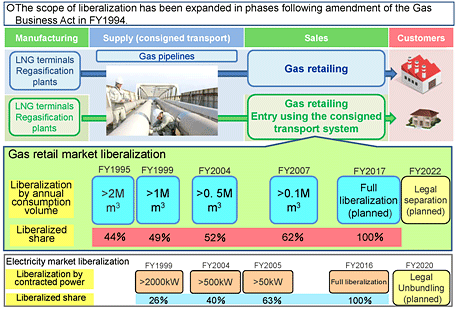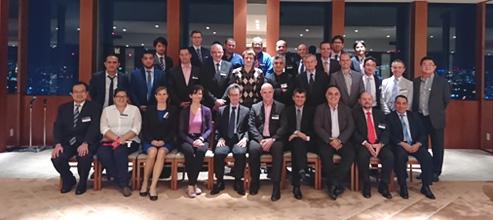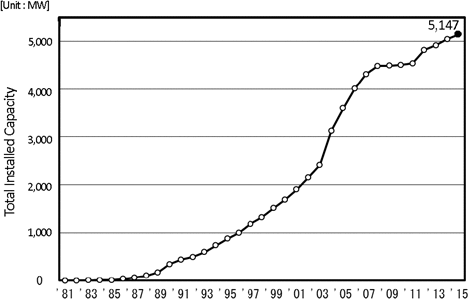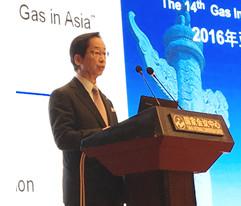News Letter
 |
Full liberalization of Japan's city gas retail market from April 2017 |
Japan's city gas retail market will be fully liberalized in April 2017. The scope of liberalization has expanded in stages, eventually reaching annual consumption volume of 100,000 m3 or more (Figure 1). It is said that a market of approximately 2.4 trillion yen (about 26 million customers) will be opened up at the full liberalization in April 2017. Following full liberalization, a city gas business will be divided into gas production (LNG terminals), gas distribution (gas pipelines) and gas retail. Maintenance and operation of only medium- to high-pressure pipelines that meet certain requirements and transport or consignment of gas supply will be classified as special gas pipeline business. In gas retail, the local monopolies on the sale of gas accepted until now will disappear, as will price regulations, in principle. All gas retailers will be able to offer various price menus to meet customer needs. On the other hand, because of the important role it plays in maintaining gas pipeline networks, the general gas pipeline business will not be liberalized and regional monopolies will still be accepted. In addition, the three major gas utilities (Tokyo Gas, Osaka Gas and Toho Gas) have a large number of customers and large-scale pipe networks, so more stringent neutrality is required. To that end, separation of pipeline divisions and other divisions into legally independent entities will be mandatory from 2022. |
 |
| Figure 1: Deregulation in the City Gas Market (retail market liberalization) |
Participation in GASEX 2016 (The 14th Gas Information Exchange in the Western Pacific Area)
|
GASEX 2016 was held in Beijing, China, from September 21-23, 2016. Since the first meeting in Tokyo in 1990, GASEX has been held every other year as an international conference in 15 countries/regions in the western Pacific region aiming to promote sound development of the gas industry through information exchange and discussion. The theme of GASEX2016 was "Gas Era: Powers a Green Future" and about 700 people from 15 countries/regions participated. There were 20 participants from Japan. The conference program consisted of six keynote speeches, member economy reports from 12 countries/regions and six breakout sessions, with a concurrent exhibition. |
|
|
In the member economy reports, Mr. Kanno, a General Manager of International Relations Department of JGA, took the stage. He began by explaining trends of Japan's energy and general economic, and current status of city gas business. He then introduced city gas utility's efforts of evolving into a total energy supply business in the processes of liberalization of gas and electricity markets. |
International Gas Union transmission committee meeting held in Tokyo |
| The International Gas Union (IGU) transmission committee (chair: Martin Slaby, Pražská plynárenská Distribuce), one of eleven committees active during the IGU's 2015-2018 USA Triennium, held its third meeting from October 3-6 in Tokyo. 29 people attended from 17 countries. Each IGU committee investigates and researches specific themes and reports its results at the World Gas Conference held every three years. In order to discuss tasks concerning the construction and maintenance of gas pipelines, the transmission committee has established three subcommittees. Their themes are 1) transmission pipeline diversification, 2) effective operations - precondition for market competitiveness and 3) safety and environmental performance of gas transmission systems. There was much lively debate at this meeting. The committee will now begin to compile the continuing investigation and research for each theme. |
| The next meeting is scheduled to be held in the spring of 2017 in Lima, Peru. |
 |
| Delegates to IGU Transmission Committee's 3rd meeting in Tokyo |
Operation Results of City Gas Cogeneration Systems for FY2015 (Total Installed Capacity) |
| The Japan Gas Association has compiled a report on the operational results of city gas cogeneration systems for FY2015 based on a survey of 206 city gas utilities nationwide. The total installed capacity of cogeneration systems (excluding steam turbines) using city gas as of the end of FY2015 (end of March 2016) was 5,147 MW, a 101MW (2.0%) increase from FY2014. The total installed base was 260,579 units, up 29,843 systems (12.9%). Of these, the total installed base for commercial and industrial use was 7,366 units, up 172 units (2.4 %) from FY2014, and 253,213 units for residential use (gas engine and fuel cell systems), up 29,671 units (13.3%)(Figure 2). The JGA and Japan's city gas industry will continue to promote city gas cogeneration systems, which are a distributed energy system with outstanding environmental and energy properties. |
 |
 |
| ∗ GE: Gas Engine, GT: Gas Turbine, FC: Fuel Cell ∗ Numbers are rounded off to the nearest whole number, and may not match. ∗ Source: Hand book of electric power industry (2015 editions) |
| Figure 2: Total City Gas Cogeneration Capacity and Systems |
City Gas Sales for the Full Year 2016 (Jan.-Dec.) |
|||
| Gas sales by Japanese gas utilities (206 utilities nationwide) in 2016 (January through December) were 37,220 million m3 (41.8605MJ/ m3 equivalent), up by 1.2% from 2015. |
|||
| By sector: | |||
| - | Year-by-year, residential sector sales decreased by 1.8% to 9,273 million m3 and commercial sector sales decreased by 0.3% to 4,265 million m3. On the contrary, industrial sector sales increased by 2.7% to 20,674 million m3, and other sector sales also increased by 3.2% to 3, 007million m3. |
||
| By region: | |||
| - |
|
||
| Information: >>> Gas Facts in Japan 2016 |
| If you have any request or inquiry on this e-mail, or if you would like to unsubscribe, please contact: newsletter@gas.or.jp and put "JGA Inquiry", "JGA Request", or "JGA Comment" at the beginning of the title of your e-mail for administrative purposes. Your comments on this e-mail are always welcome. |
|
The Japan Gas Association |


